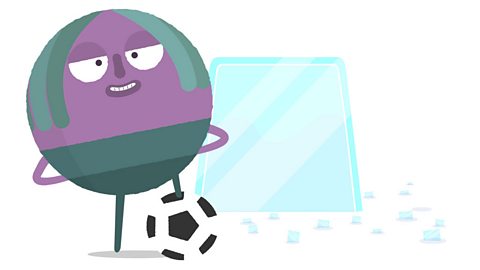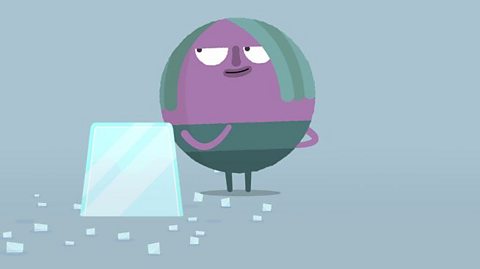The states of matter
Solids, liquids and gases are called the three states of matter.
Watch: What are the states of matter?
Watch and learn about the three states of matter.
Solids

Examples of solids include ice, wood and sand.
- They stay in one place and can be held.
- They keep their shape. They do not flow like liquids.
- They always take up the same amount of space. They do not spread out like gases.
- Solids can be cut or shaped.
- Even though they can be poured, sugar, salt and flour are all solids. Each grain of salt, for example, keeps the same shape and volume.

Examples of solids include ice, wood and sand.
Liquids

Examples of liquids include water, honey and milk.
- They can flow or be poured easily. They are not easy to hold.
- They change their shape depending on the container they are in.
- Even when liquids change their shape, they always take up the same amount of space. Their volume stays the same.

Examples of liquids include water, honey and milk.
Gases

Examples of gases include steam, helium and oxygen.
- They are often invisible.
- They do not have a fixed shape. They spread out and change their shape and volume to fill up whatever container they are in.
- Gases can be squashed.

Examples of gases include steam, helium and oxygen.
Activity 1: Identifying states of matter
Activity 2: States of matter quiz
Activity 3: Liquid lava lamps
Try making your own liquid lava lamps with this activity from the Science Museum Group
Liquid lava lamps
Make your own liquid lava lamp with this activity in partnership with the Science Museum Group.

Bitesize Primary games. gameBitesize Primary games
Play fun and educational primary games in science, maths, English, history, geography, art, computing and modern languages.

More on States of matter
Find out more by working through a topic
- count2 of 3

- count3 of 3
